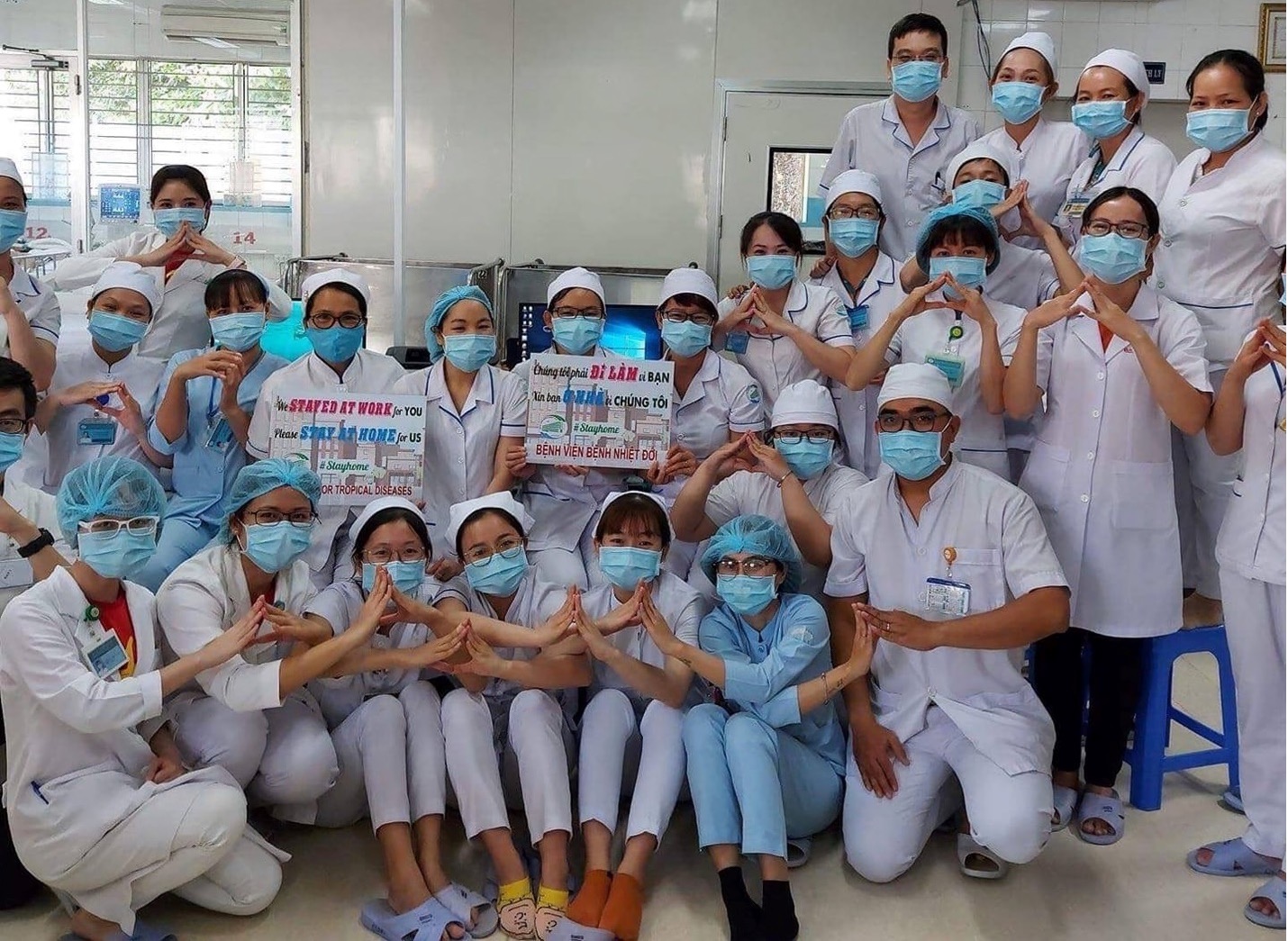Team-based care: responding to COVID-19 in the intensive care unit, Vietnam


On 2 February 2020, the Vietnam Government officially declared coronavirus as an epidemic. Around the world, at that time, there were just over a million cases of coronavirus. In Vietnam, by 15 March, 57 confirmed cases were reported. On 18 March, a British patient was admitted to hospital after testing positive for the coronavirus; the patient’s condition quickly deteriorated and he was admitted to Ho Chi Minh City Tropical Diseases Hospital for ventilator and extracorporeal membrane oxygenation (ECMO). On 22 May, the patient was transferred to the Emergency Department and Tropical Disease and Toxicology, Cho Ray Hospital, Ho Chi Minh City. He spent more than 60 days on a ventilator support, two-and-a-half months in a medically induced coma and received ECMO treatment. On 3 June, after nearly two months of life support with severe condition, the patient was finally disconnected from the ECMO support and able to breathe again without the assistance of a ventilator.
One of the most important key factors which contributed to the success of this patient's recovery was the team-based care model. This care model has been implemented at the Emergency Department and Tropical Disease and Toxicology in Cho Ray Hospital for years. This model includes three important factors: 1) nursing assignment implementation; 2) adequate equipment and medical supplies; and 3) infection control.
Nurses work according to an eight-hour shift; each shift includes three nursing levels: primary nurses (one senior-level nurse providing advanced nursing care); assistant nurses (one junior-level nurse responsible for testing, surface cleaning, patient turnaround support, personal hygiene, and others); and standby nurses (one nurse can replace the primary and assistant nurses in sudden incidents). Social media apps are used to closely comminate between all members in each group. The job description is specified in the assignment sheet of each individual position.
The isolation room is set up according to the CDC's recommendations and is fully equipped with enough equipment and machines for the patient. Adequate personal protective equipment (PPE) is available, including enough medical supplies, consumable equipment, and drugs to minimize nursing movement.
The facility strictly complies with the use of PPE to protect medical staff and patients. However, they lack a negative room air pressure with additional barriers including an anteroom and there is no system to control the airflow according to the standard 12 airflows/hour. To address this issue, a system with natural ventilation was used to flow the air out of the area and the door was opened twice a day or as needed (performing aerosolization procedures).
The patient's transportation is limited. All the patient's movements must be considered medically essential by the clinicians according to the CDC's recommendations. All surfaces are routinely cleaned and disinfected, especially high-touch surfaces, whenever visibly soiled or if contaminated by body fluids, according to CDC recommendations.
For the test sample, all specimens undergo three-layer packaging with one additional step: chlorine spray the sample tube → wrap the absorbent paper around the sample tube → chlorine spray → put into the zipper bag → put in the shipping container.
In conclusion, with these nursing activities, nursing care has proven to be one of the most important roles for treatment and recovery of COVID-19 patients. With the team-based care model and strict adherence to infection control, the patient recovered and was discharged, with no cross-infection during this treatment period.